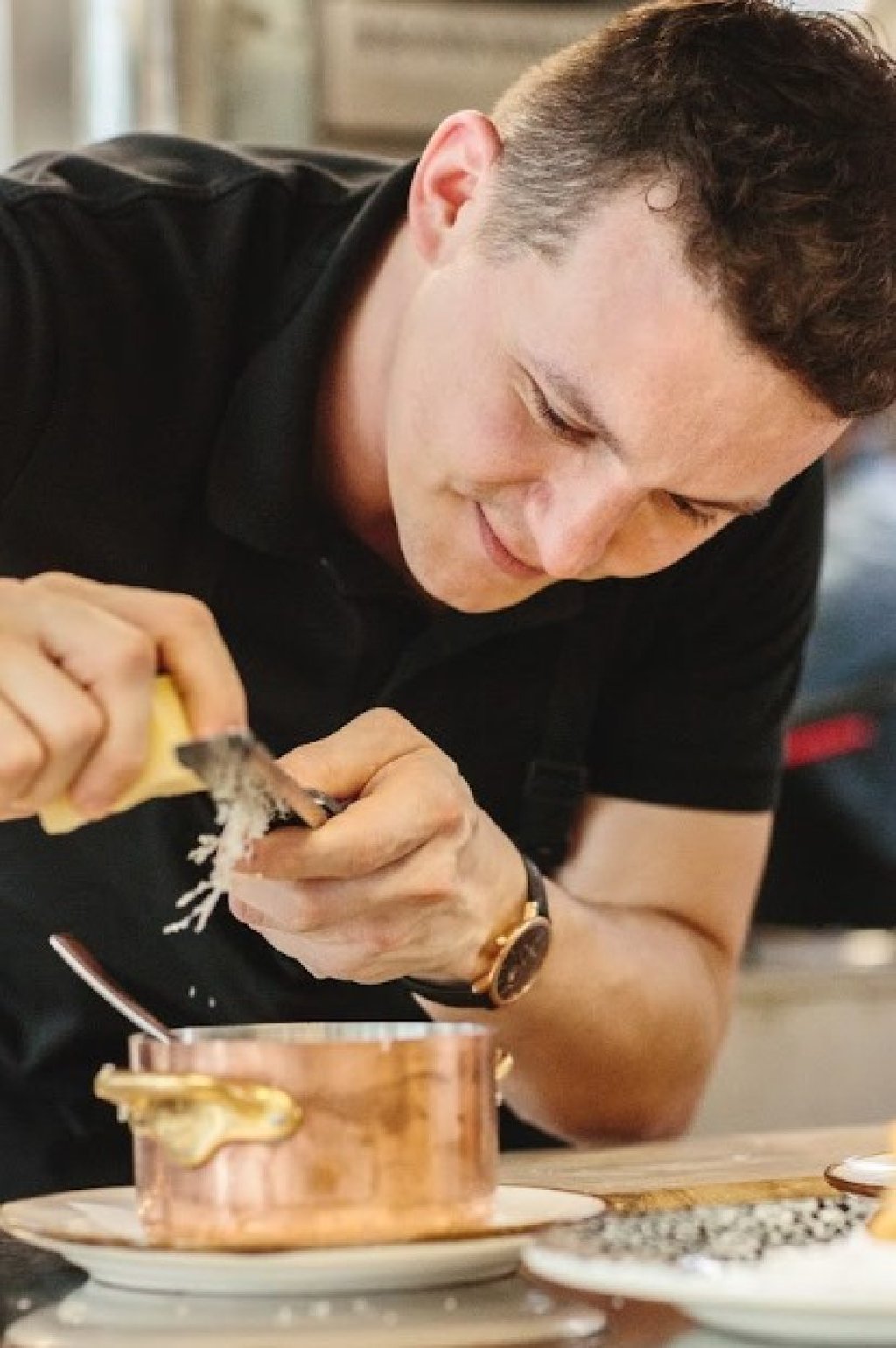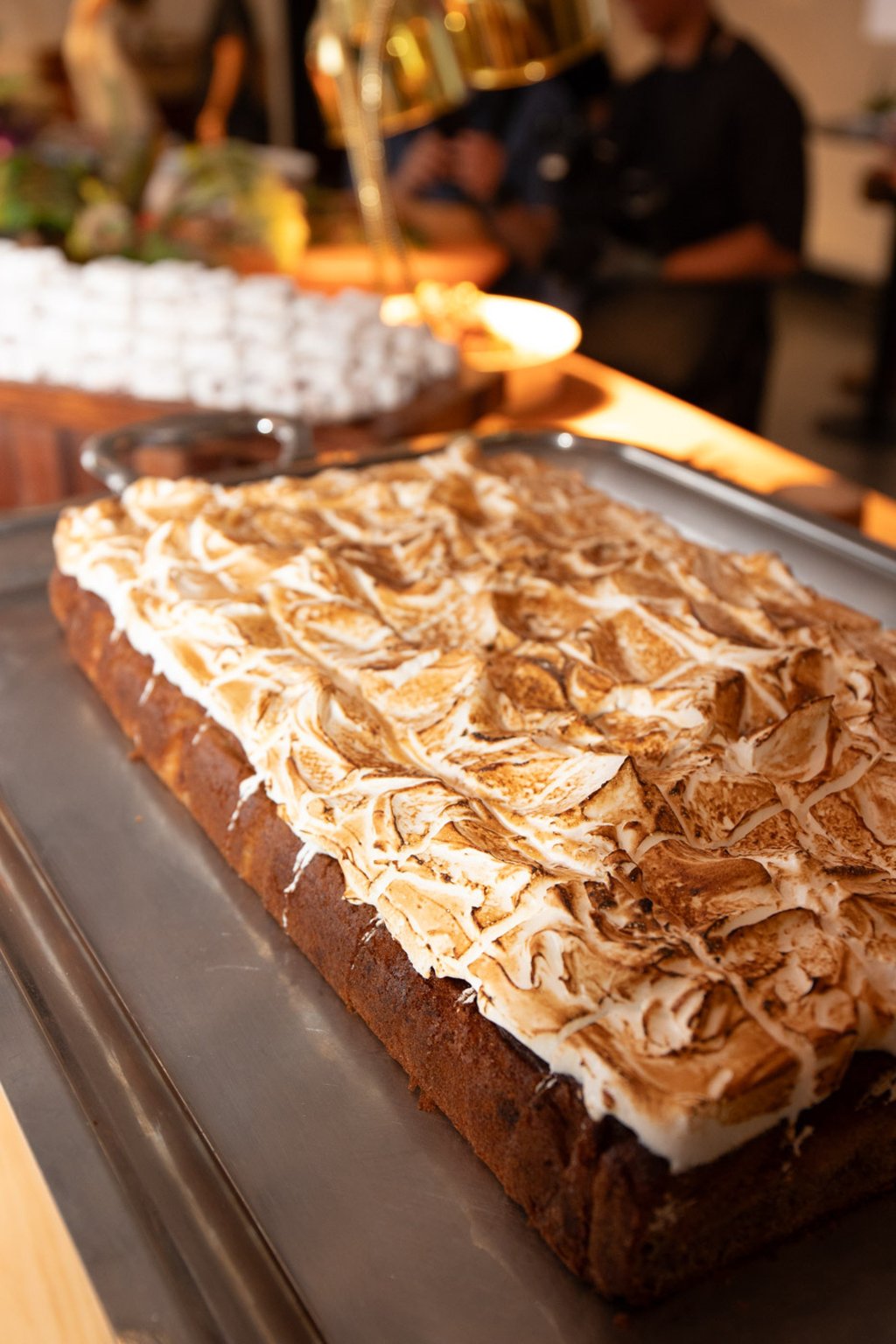When we think of food waste, we often picture expired food from our fridge ending up in the trash. However, one of the biggest sources of food waste is excess and unused inventory in the food service industry.

These are foods that are not necessarily expired or spoiled, but sometimes contain parts of ingredients that are not on the menu.
The app sorts stores according to the user’s geographic location, and they can reserve and pick up items like pastries, bread, and beer, saving some perfectly good food from landfill.
Martinesi, who has worked in the food and beverage industry throughout her career, launched the app in 2021 after witnessing firsthand the problem of food waste around the world.
Today, Chomp works with around 250 grocery stores, including industry giants like Maxim’s and Shangri-La, and has more than 50,000 subscribers. It’s estimated that the app has saved around 20 tons of food from landfill.

This is the second time Martinesi has collaborated with Soho House chef Chris Czerwinski on such a concept; the first was a smaller private event for the club.
“The last dinner Chris attended saved nearly 100 pounds of food and was a family-style dinner for 60 people,” she says.
As for ‘The Rescued Feast’: “It will be presented buffet style and it’s the first time we’re trying to host 200 people,” says Martinesi.
Since planning and consistency in food supply are among the biggest tasks of running a restaurant, organizing such a feast with the available leftovers is a challenge for the kitchen team.
While Martinesi attempted to mediate by providing the chef with a list of expected over-delivered food a month in advance, Czerwinski was only able to receive the final list 24 hours before the event.

The private dinner included 6kg of egg whites from a ramen shop that uses only egg yolks for the sauce, bananas from a farm in Yuen Long and plenty of prawns. The menu included banana bread with Italian meringue and prawn ravioli.
“It’s definitely a process,” says Czerwinski. “We’re lucky that the cuisine at Soho House is diverse.”
“We have Italian and Chinese cuisine where we can ask the dim sum chefs for help and use a wok to cook noodles or fried rice. We can ask our pastry team for help to make things like banana bread.”
At the Rescued Feast on July 30, 350kg of food was provided by donors including Conspiracy Chocolate, Jean May, LSG Sky Chefs, SpiceBox Organics, Slowood and TreeHouse.
The items included 100 kg of white fish fillets, 5 kg of moth beans, 2.5 kg of jackfruit pieces, 7 kg of spices, 200 cans of IPA beer, 14 kg of fruit and 4 kg of chocolate shavings.
The buffet was an elegant affair: a bohemian style setting with copper heating lamps and flowers and vegetables as decoration between the dishes.
Dishes served included jackfruit, coconut and lime leaf, and grilled cabbage hearts with a spicy marinade. There was a bread course with beer focaccia and a seared tuna salad.

Biodegradable take-away containers were provided so that guests could take any leftover food home with them.
The feast of leftovers was delicious and showed that with thought and creativity, there really is no reason to waste so much food in Hong Kong.
While it is honorable to show that discarded food is perfectly fine and delicious, unfortunately it is not a concept that can be transferred to the production of a functioning restaurant – the planning and organization is too labor-intensive.
“Due to the consistency and scalability, this is not possible on a daily basis,” says Czerwinski. Martinesi adds: “One of these events requires a month of planning time.
“This is not something we take lightly because it is very labor-intensive. But we want to make it a series that lasts several months.”

